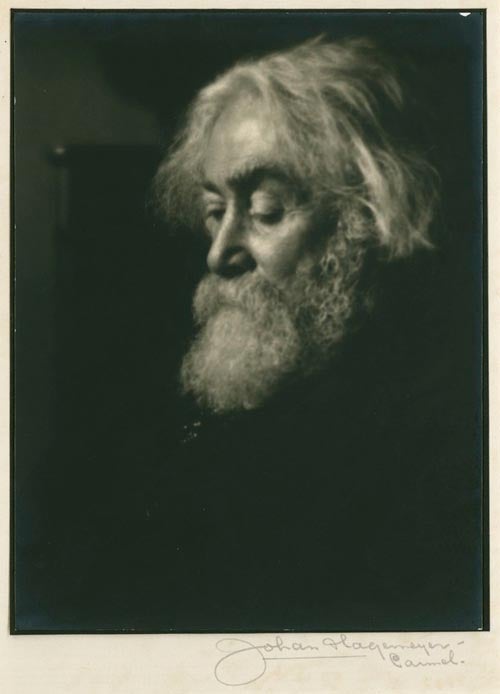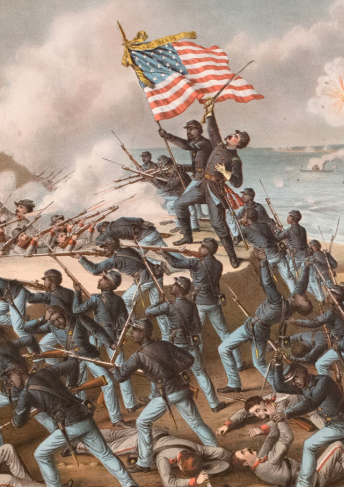
Portrait photograph of Charles Erskine Scott Wood.
[Carmel, Calif: ca. 1930].
Price: $1,500.00
About the item
Vintage gelatin silver print, bust portrait in profile. Signed in pencil ("Johan Hagemeyer, Carmel") on the mount. 1 vols. 21.5 x 16.5 cm. (8-1/2 x 6-1/2 inches). Matted, with photographer's stamp on verso of mount.
Item #225928
Charles Erskine Scott Wood (1852-1944) was a writer, poet, soldier, corporate lawyer, associate of Clarence Darrow, and a lover of books. He was a founder of Portland's Public Library and the Portland Art Museum, self-proclaimed anarchist, atheist, regular contributor to radical journals of the day, and the lover of the famous suffragist, author, and activist, Sara Bard Field. As Wood's wife would not grant him a divorce, he and Field settled in San Francisco, and later in Los Gatos, where their home was a creative center for writers, artists and political activists in the Bay area.
According to THE BANCROFT LIBRARY'S on line "Guide to the Johan Hagemeyer Photograph Collection":
"In late 1916, just prior to [Hagemeyer's] return to California - and despite having had little photographic experience - Hagemeyer visited Stieglitz's 291 salon in New York City. The two developed an immediate rapport, and the meeting proved to be decisive for Hagemeyer. "We talked," Hagemeyer later recalled, "and he practically, by way of speaking, made me follow photography. I had already gone overboard for it" (OHT 22).
"Back in California, Hagemeyer first apprenticed with a Berkeley-based commercial portrait photographer named McCullagh. Soon afterwards he moved south to Pasadena and in early 1918 met Edward Weston, already by then an accomplished photographer based in Tropico (now Glendale). The two took an immediate liking to each other and formed a friendship and working partnership that was of mutual benefit: Weston opened his home and studio to the upstart Hagemeyer, and Hagemeyer introduced the relatively unschooled Weston to new worlds of intellectual and aesthetic learning. The two would have a profound influence on each others' artistic development for years to come. (Arch. [see essays by Lorenz and Schaefer])
"Hagemeyer's talent developed rapidly and by the early 1920s he was exhibiting his work in many important photographic salons and garnering much popular and critical acclaim. After moving to San Francisco at the end of World War One, Hagemeyer soon discovered the intellectual and artistic colony of Carmel-by-the-Sea. In 1923 he established his first studio in Carmel and would remain anchored there for over 20 years. In 1924 he established the town's first art gallery - based out of his studio - where he exhibited the works of local painters, sculptors and photographers and hosted very popular musical performances. Shortly thereafter Hagemeyer opened a second studio in San Francisco, whose clientele could be rivaled by that of Carmel only during the smaller town's summer vacation season. In 1927, he was appointed staff photographer of the artistic/literary magazine The San Franciscan ... "



